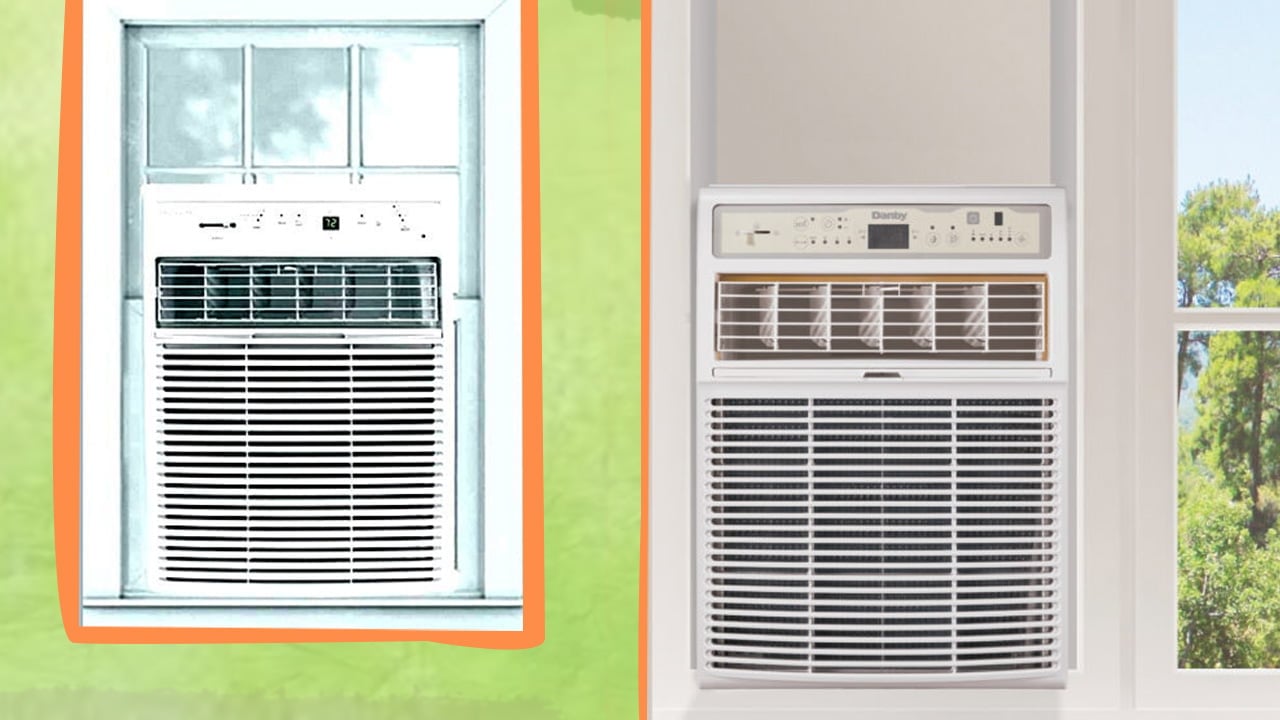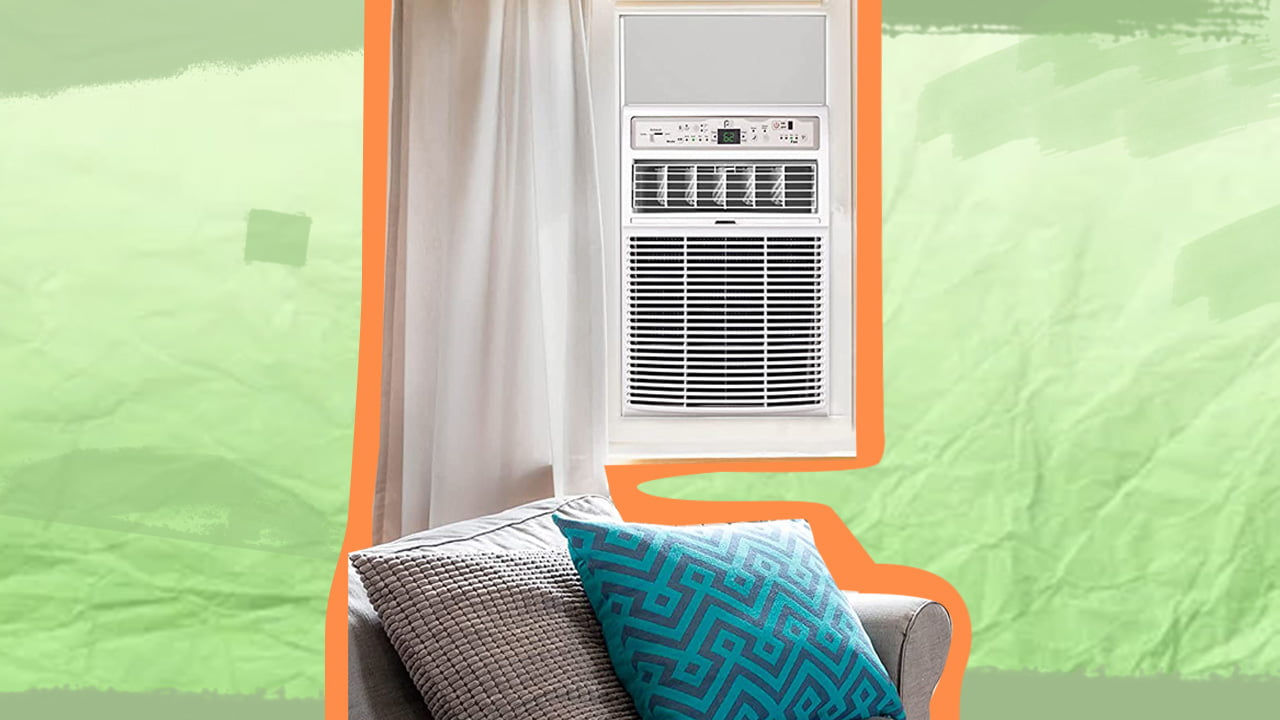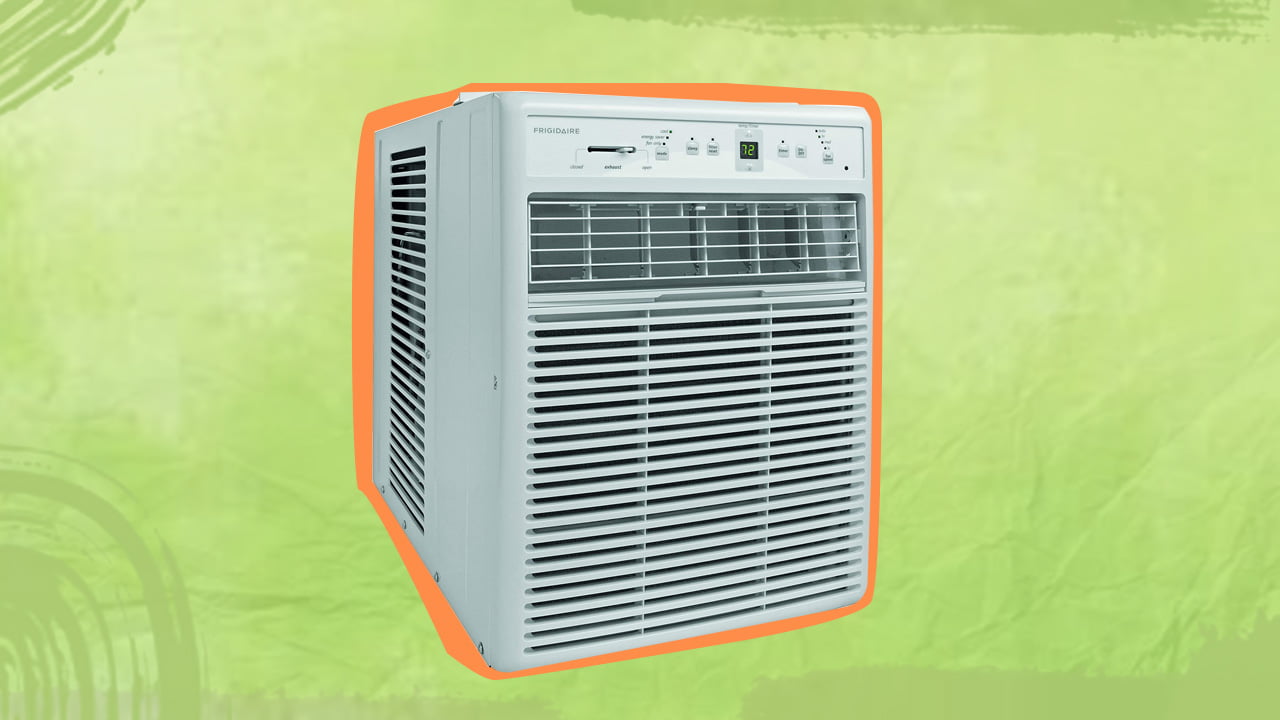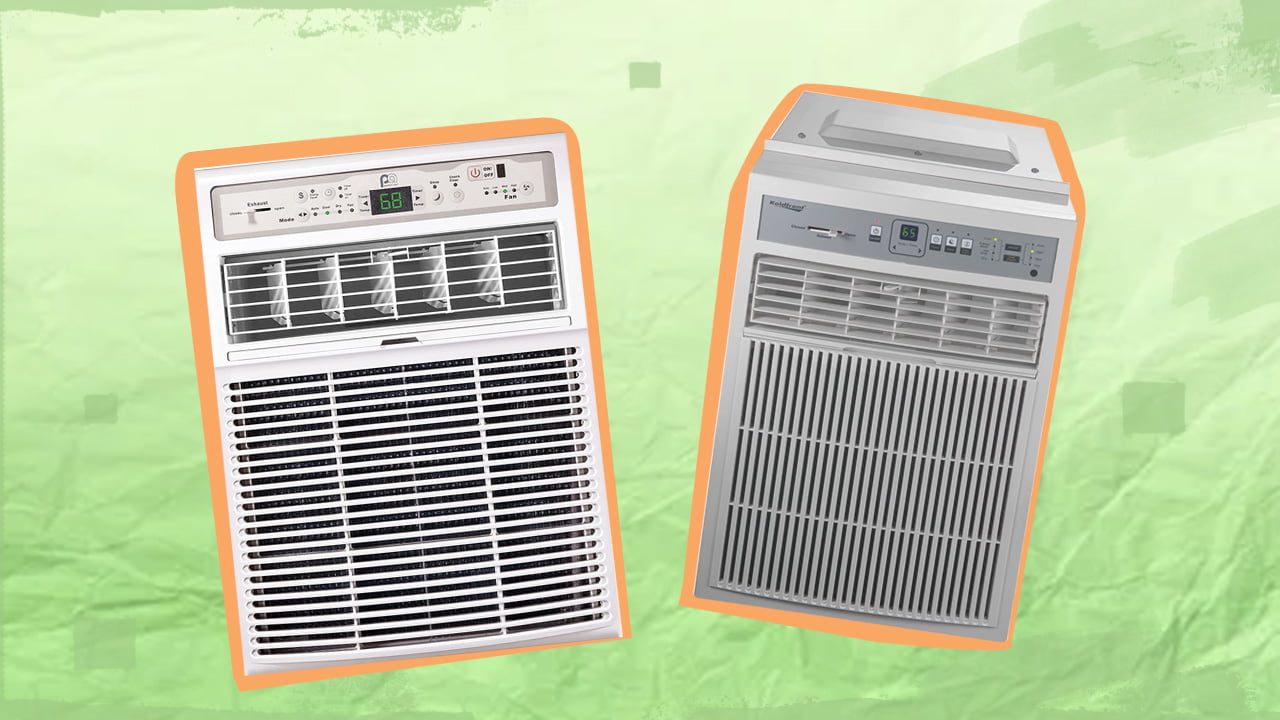Everything You Need To Know About Casement Window Air Conditioners
Casement window air conditioners are compact devices designed to fit into narrow window casements. They are easier to install than a traditional AC and many casement ACs are portable too. Factors like the size of the room, energy efficiency ratio, and noise level should be considered before buying them. Traditional ACs are not ideal if […]

What Are Casement Window Air Conditioners?
 Casement air conditioners are specifically designed to fit perfectly in up to 20-inch tall casement or crank windows that open outwards owing to their hinges on the sides. The AC units come with precut fasteners and inserts designed to hold them in the required space. This eliminates the need of creating barriers of styrofoam, plywood, and other such materials.
Casement air conditioners are specifically designed to fit perfectly in up to 20-inch tall casement or crank windows that open outwards owing to their hinges on the sides. The AC units come with precut fasteners and inserts designed to hold them in the required space. This eliminates the need of creating barriers of styrofoam, plywood, and other such materials.
How Do Casement Window Air Conditioners Work?
While learning about casement window air conditioners, it is understandable to question their workability. These ACs follow a basic premise of functioning – that of converting hot air to cool air. A casement window air conditioner has a fan installed in it that draws in all the hot air from the room into the unit for the conversion process. Once the air enters the casement window air conditioner, it flows to the evaporator coil. This coil contains a refrigerant that cools the trapped air down by absorbing the heat from it. The air is now cool, and it is released back into the room through a vent in the AC. The refrigerant, which was previously in the evaporator coil is converted into a gaseous form and moves towards the compressor. It passes through the condenser coils in the outdoor AC unit where it is compressed. And the heat released during this process is let out of the exhaust vent through the casement window. At the end of this process, the refrigerant comes back to the evaporator coil and the cycle goes on. In casement window units, the amount of refrigerant used is significantly lower than the amount used by traditional air conditioners. Hence, they are better for the environment too!What Are The Benefits Of Casement Window Air Conditioners?
Though casement window air conditioner units have existed in the market for several decades now, their popularity has witnessed a sudden growth in recent years. After all, homeowners today look for efficient options to maximize efficiency but minimize costs. Yet, it is important to be aware of the different benefits that a casement window AC offers before purchasing it. Here are a few of its advantages:1. Compact Size
One of the best benefits of a casement window AC is its size. Since it is quite compact, such air conditioners can fit into small spaces, such as narrow casement windows. For instance, vertical window air conditioners can easily fit into a vertical wall opening, and so on.2. Easy To Install
Another great advantage of possessing a casement window air conditioner is the hassle-free process of installation. Even if you are a complete rookie when it comes to installing electronic appliances, you will probably set the casement window AC up easily. The window AC typically comes with a detailed installation guide. If you follow all the guidelines carefully, your work will be done smoothly. There is no requirement for fancy tools or years of expertise to install the window AC unit.3. Portable
Many window AC units today come with an option to be moved from one place to another easily. Compared to traditional air conditioners, portable ACs are much more efficient since you can take them to whichever area you wish to cool. Portable air conditioners can be installed in any window to cool the specific area of the living space.4. Affordable
One of the major reasons why people are hesitant to go for a traditional AC unit is its cost. Now, these AC models might provide one with features, such as precise airflow direction, a programmable timer, and a decent cooling capacity. However, they might not always fit one’s budget. Hence, the best solution in such a case is to go for casement window AC units. They are quite affordable, and any typical casement window air conditioner provides users with almost the same benefits as a traditional AC.
Types of Casement Window Air Conditioners
To purchase the best casement window air conditioner that would fit effortlessly into your casement window, there are several things that you need to be aware of. One such factor is the type of air conditioner that would suit your needs the best. According to its size, workability, and structure – a casement window air conditioner can be categorized into two types. They are discussed as follows:1. Slider Window Air Conditioner
If you want to fit your window ac in sliding windows, then a horizontal sliding window air conditioner might be the perfect option for you. ACs for sliding casement windows are quite easy to install. There is no need for any extra tools since the installation kit that comes with the product is sufficient in most cases. Casement window ACs also come with features like sleep mode, great energy efficiency, remote control, auto restart, and so on. They are portable as well. Meaning, one can easily move their sliding window AC to different casement windows as and when needed. However, it is still advised to keep factors like maximum height, minimum width, floor space, and so on in mind while looking for the size of your slider window AC. The unique design of a sliding window air conditioner allows it to fit in a sliding window securely. However, one needs to ensure that the sliding window AC is compatible with their window. Since sliding windows usually exist in a variety of sizes, it may be a little difficult to find the ideal sliding window ac unit.2. Vertical Window Air Conditioner
If you have vertical casement windows in the room where you intend to install your AC unit, a vertical window air conditioner might be the best option for you. In most cases, such units are tall and slim in design to fit in a constricted region perfectly. Although AC units manufactured to fit vertical casement windows do not fit into the criteria of a portable air conditioner, they can be easily removed and put away when not in use. You won’t require a lot of manpower for this as these casement window ACs are quite compact. The energy efficiency of a vertical casement window AC is quite decent too. It provides multiple fan speeds and a great cooling capacity only to a specific region of the room, which helps to cut down on unnecessary costs. Most units also come with an energy saver mode. The only downside of this AC type is that it can be a bit difficult to install. And if the air conditioners do not fit the vertical windows perfectly, there might be problems like leakage. Hence, it is important to note factors like minimum window width, maximum window height, crank windows, and so on to prevent any damage in the future. A good installation kit may also be required to fill in any possible air gaps.
Factors to Consider Before Buying a Casement Window Air Conditioner
Before buying a casement window air conditioner it is best to be aware of the things that might influence one’s decision for the better. Hence, here are a few factors to consider before purchase :1. Size Of The room
Since air conditioners designed to fit such windows cool a specific area of the room, it is important to purchase the correct size of such an AC. For instance, if I buy an extremely compact casement window air conditioner but have a large room to cool, it probably won’t work as efficiently. Similarly, if I buy a huge portable air conditioner to cool a small room – it is a waste of energy and money. Hence, get a casement window AC that complements the size of the room in the best way.2. Energy Efficiency Ratio
The energy efficiency ratio greatly affects aspects like the functioning of the device. Energy-efficient casement ACs can ensure that your energy costs are as low as possible. This feature helps one to save money in the longer run. Energy-efficient casement ACs are also quite environmentally friendly since they emit less greenhouse gas and carbon footprint as compared to their traditional counterparts. Moreover, they have a longer lifespan and cool the room efficiently.3. Noise Level
Loud noises from an AC can be frustrating, especially in areas that require one to focus (such as offices). Further, such disturbances while sleeping may hamper one’s sleep schedule for the worse. The overall ambiance of the room can be greatly affected by loud noises from air conditioners. And in many cases, such noises imply that the unit is of low quality. As such, you will have to spend a lot of money on the constant maintenance and repair of the AC.4. Installation Process
While setting up devices such as a traditional air conditioner, one may have to call for assistance or use several tools. However, ACs designed for casement windows are relatively easier to install. Most casement window AC units come with an included installation kit. They have simple tools, and the instruction guide that comes with the installation kit is quite easy to follow. If the AC has been bought keeping factors like minimum window width, window sill, window opening, square footage, etc. in mind then the overall process of installation should be easy. However, the process differs a little depending on the type of casement windows your room has. For instance, ACs built for slider casement windows can be easily installed and removed. On the contrary, the process of installing the vertical casement window AC might be a bit more complicated. It is best if one assesses factors like the window’s shape and size before choosing a casement window AC.Casement Window AC FAQs
The size of your casement window air conditioner depends on factors, such as the size of your room and casement window. It is suggested that you calculate the square footage of the room to get a better idea of the floor space.
You can also predict the amount of BTU required based on the area of the room. For instance, an area of 250 to 300 square feet requires about 8,000 to 10,000 BTU (British Thermal Unit).
Yes, a casement window AC can be used in other types of windows too in some cases. However, a little modification and consideration of certain factors may be required to do so. For example, the window size and type should complement the AC perfectly.
Additionally, airflow and electrical requirements should be maintained to ensure the smooth functioning of the device.
You can easily maintain your window AC by taking out the filter from the frontal region of the unit. Then remove the dirt and dust using a brush and rinse thoroughly with water. Further, cleaning the coils on a routine basis can help ensure longevity of the AC components. It is also advised to schedule regular maintenance services to check the functioning of the device.
I would recommend not leaving your casement window AC in place during the winter months because that can degrade the quality of the device in the long run. Since extremely low temperatures can cause the water inside the AC to freeze, the residue of water within the device may expand and lead to damaged AC components. The debris buildup may also be difficult to deal with.
The noise emitted by a casement AC depends on several factors. Aspects like model, brand, quality, and so on greatly affect the intensity of noise emitted from the device. Typically, a casement window AC emits about 50 to 60 dB of noise levels when running at the highest fan modes.

